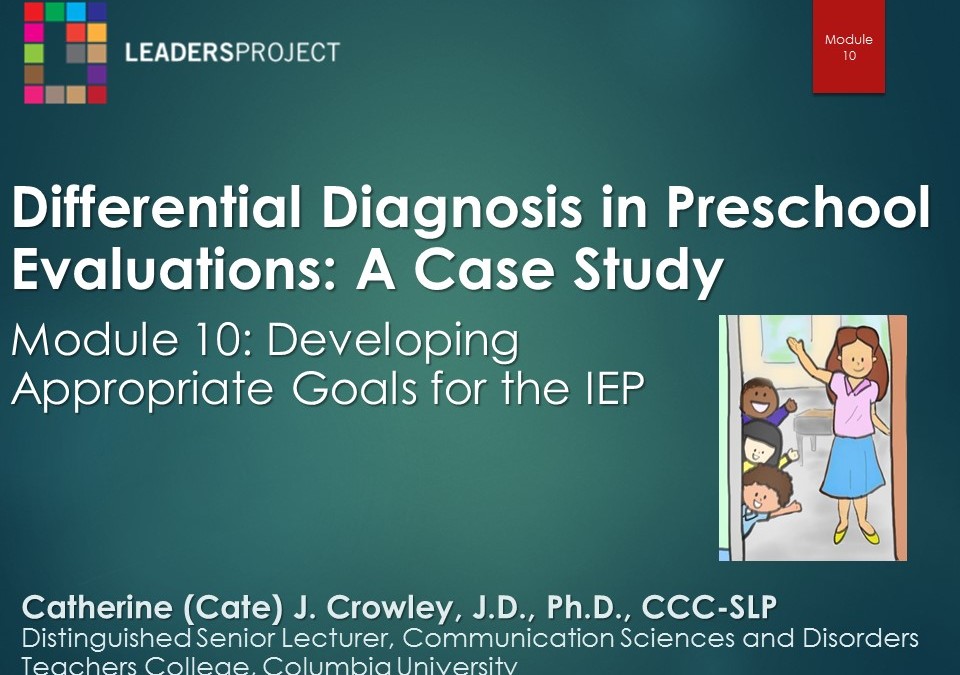In this module, Cate reviews the conclusions of the evaluation and works to develop goals that will provide the support that Alex really needs.Cate includes her estimation of percent delay for Alex to allow for disability determination. She is also careful to include his diagnosis at the beginning of the IEP. For Alex, Cate recommends identifying functional phrases to target that will allow Alex to be more successful in communicating as soon as possible. She also noted the supports and strategies that helped Alex to be more intelligible, in this case the multisensory approach. In order to support Alex’s communication development, he should interact with peers who can be conversation partners. In addition, Cate chooses to target repetition of consonant and vowel syllables and reminds us that therapy for this child will require a lot of repetition and drills. She also distinguishes between annual and short term goals to be targeted at school and at home.
Find resources used throughout this playlist here:
Model Eval: 2;10-English/Spanish- Verbal Apraxia
Model Eval: 2;10- Verbal Apraxia IEP Goals
Find the playlist for the full set of videos in this module series here:
Differential Diagnosis in Preschool Evaluations: A Case Study (DDPE Playlist)
Find each of the modules from this playlist here:
Module 1: Why an Accurate Differential Diagnosis Matters
Module 2: Critical Questions for the Parent Interview Part 1
Module 3: Critical Questions for the Parent Interview Part 2
Module 4: Academic Language Expressive and Receptive Language
Module 5: Receptive Language Comprehension and Following Directions
Module 6: Eliciting Quality Narratives in Expressive Language
Module 7: Motor Speech, Articulation, and Speech Sound Inventory
Module 8: Dynamic Assessment: Nonword Repetition, Syllable and Sentence Repetition
Module 9: Putting it All Together in the Written Evaluation Report


![[feed link]](/wp-content/plugins/rss-just-better/rss-cube.gif)